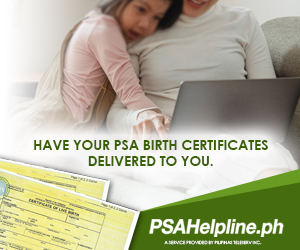Your child’s car rides are going to be dependent on the car seat that you will buy. Think of it as child-proofing your vehicle, how can you make travels safe and comfortable? As recommended by the Centers for Disease Control and Prevention, due to airbags, children younger than 13 years old must ride in the back seat. But child-proofing doesn’t stop there. You should also check the seat itself for features such as adjustable straps, 5-point harness, and side-impact protection. You must even verify if the unit has met or exceeded the Federal Motor Vehicle Safety Standard 213.
However, there are different types of car seats. And if you have more than one child, the information that you must take in can be overwhelming. The good news is, choosing a car seat for each child is rather simple. For example, the American Academy of Pediatrics recommends keeping young children in rear-facing until they outgrow it. This rule applies to any car seat stage, wait until your child outgrows the seat before transitioning him/her to the next. But to give you a guide for each of your children, you can start with this information:
- For Your Infant
If you have an infant, there are two types of car seat that you can consider. The first type is a convertible car seat, and the second one is the infant-only seat. The former can last your child as he/she grows, but the latter fits smaller infants better. While it is true that it’s a great purchase if you can convert your unit to the next car seat stage, the infant-only seat still has its perks.
Some parents can argue that moving a sleeping baby is priceless than waking him/her up during transfer. What we mean by this is convertible seats stay in the car, while infant seats have a base that allows you to remove it from the vehicle. And if you want practicality, you can look for a car seat that comes with a stroller in a single purchase. You can even find a car seat stroller combo on CuteLittleDarling that they commend for having a 55-pound weight limit, which we think is excellent for lasting infants.
- For Your Toddler
Now, if you have a slightly older child or if your youngest outgrows his/her infant seat, you can opt for a rear-facing seat or a forward-facing seat. Some manufacturers have created rear-facing seats with higher height and weight limits to accommodate taller and bigger kids. But if your child does not fit in the rear-facing seat’s requirements, opt for a forward-facing seat instead.
You can pick from a forward-facing only car seat and a convertible car seat. The advantage in choosing a forward-facing only car seat is that they can typically accommodate children weighing up to 65 pounds or more. They will also cost less than a convertible if you’re on a budget. However, the advantage with a convertible seat is that once your child outgrows the harness seat, you can just convert it into a belt-positioning booster.
- For Your Preschooler
The truth is, there is no specific age for when your child should use a booster. Like with any other car seat stage, the best time to transition into the next stage is when your child exceeds the seat requirements. But if you need a guide, children usually outgrow their harness seats around 8 to 12 years old according to the American Academy of Pediatrics.
Most belt-positioning booster seats have a weight limit of 80 to 100 pounds, while some even reach up to 120 pounds in backless mode. If you have a toddler, it might be more practical for you to get a highback booster seat that you can convert into a backless booster seat later on.
Boosters work by “boosting” your child’s height so that they can get the proper seat belt fitting. They need this help because car manufacturers designed seat belts for adults. A highback booster is the safest because of the added head and back support useful for kids who slump when asleep. However, a backless booster is more lightweight for traveling and is a viable option of your car’s seat has a headrest.
- When Can My Kids Start Using Seat Belt Only?
As a parent, it is inevitable that one day, your child will ask you if they can ditch the booster and use the seat belt like the “big kids.” However, no matter how tempting, you have to resist their request for their own safety. Before they can use the seat belt on its own, make sure that he/she has the proper belt fit and demeanor.
If the answer to the following questions is yes, then your child can use the seat belt without a booster:
- Does the shoulder belt cross his/her mid-shoulder and midchest?
- Does the lap belt sits on his/her thighs and not on his/her lower abdomen?
- Can he/she sit with his/her lower back against the seat?
- Can he/she keep his/her knees comfortably bent at the edge of the sit with his/her feet on the floor?
- Can he/she maintain this position throughout the ride?
Proper posture is vital for your child’s safety. Slouching, or constantly moving around, be it bending sidewards or forwards are dangerous in case of a crash. If your child is unable to hold the following position during the entire car ride, it is best that he/she stays in the booster seat until he/she has the proper behavior.
- How to Know That My Child Has Outgrown the Seat
We mention this factor throughout the article but besides basing on the seat’s requirements, are there other signs to look out for?
- The harness slots are below your child’s shoulders.
- The top of your child’s ears reaches the top of the car seat.
As you have read, choosing a car seat for each of your children is pretty straightforward. The main thought that you can take in this article is to wait until your child has outgrown his/her current seat before transitioning to the next one. Each of your children will have different car seats depending on their height and weight, demeanor, and even age.
But besides the car seats themselves, you should also check your vehicle. The car seat and your vehicle should fit perfectly together to provide the best protection and comfort to your child. But even if you have more than one child and a small car, you have no excuse not to use a car seat. CuteLittleDarling says that there are units that you can install 3 across even if you do not own an SUV.
 Copyright protected by Digiprove © 2019
Copyright protected by Digiprove © 2019









Thank you for mentioning my articles, Louisa Mercado! It is important that each child has their own car seat. Unfortunately, some parents think it’s okay not to put their older children into a car seat as the youngest is more at risk. I believe convertibles will be more practical for parents with a lot of kids. This way, their other siblings can use the seat once they grow up.
Thank you for sharing this very helpful tips momsh.. Maapply ko po ito pag magkaroon na ako ng sariling sasakyan, soon.. Tiwala lang… Ibaiba pala ang klase ng mga upuan depende sa bata.. Merun din pala pang toddler.. Galing!!